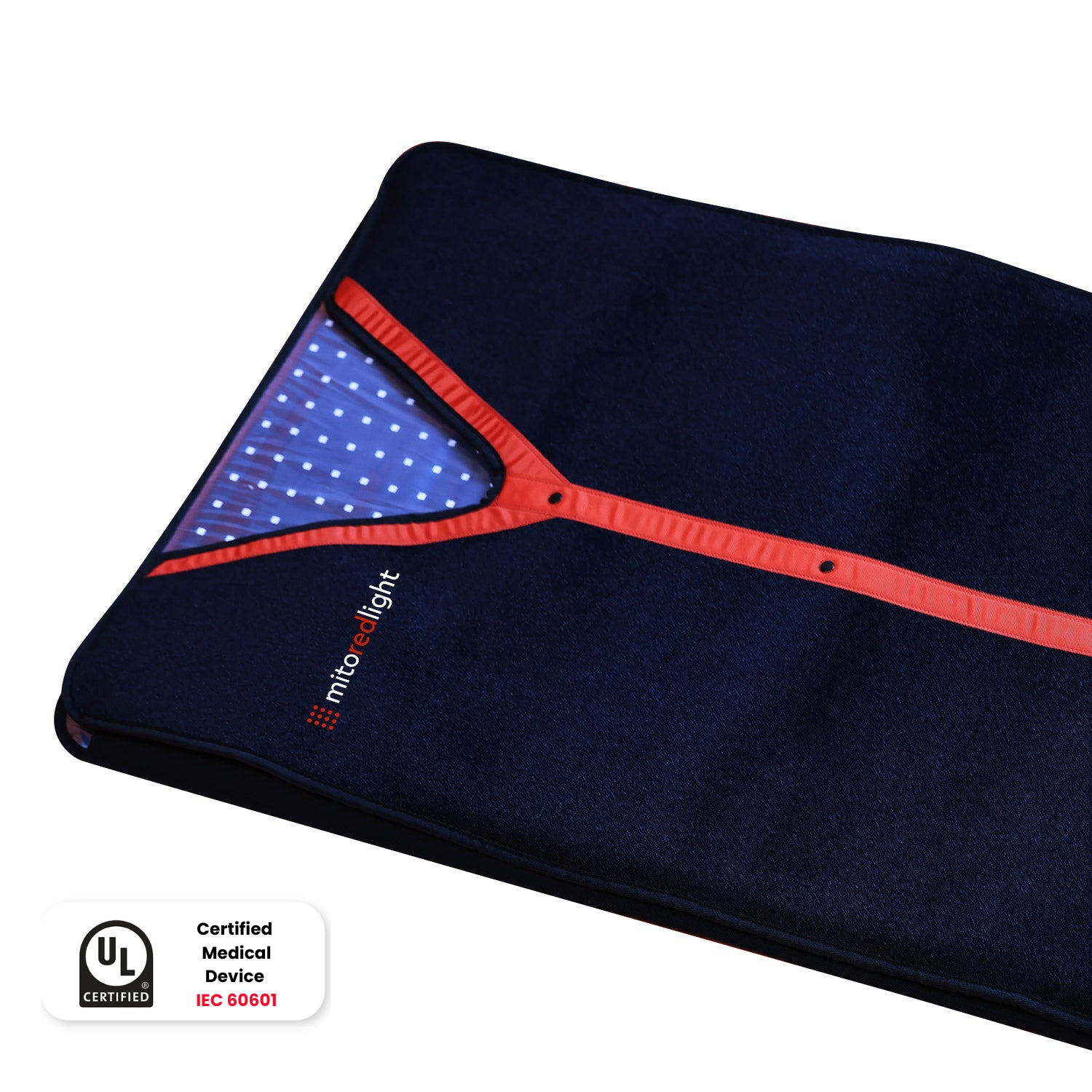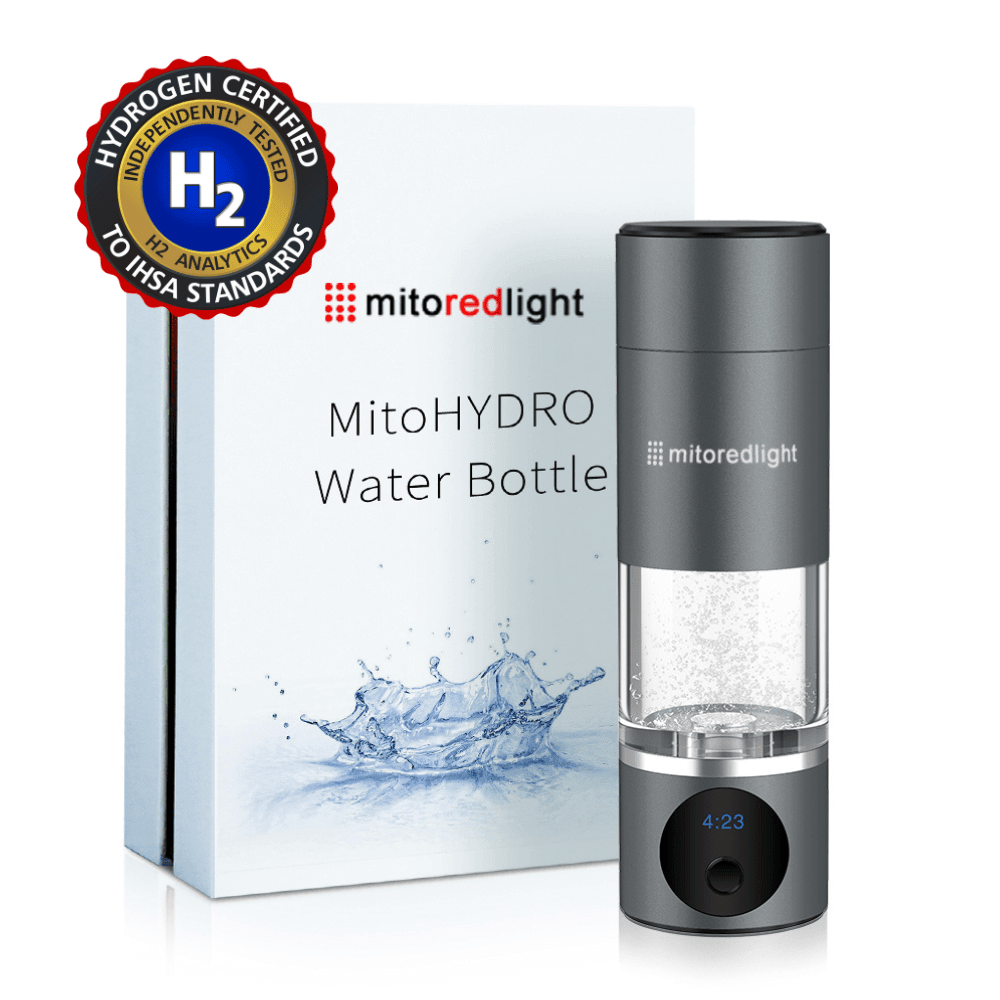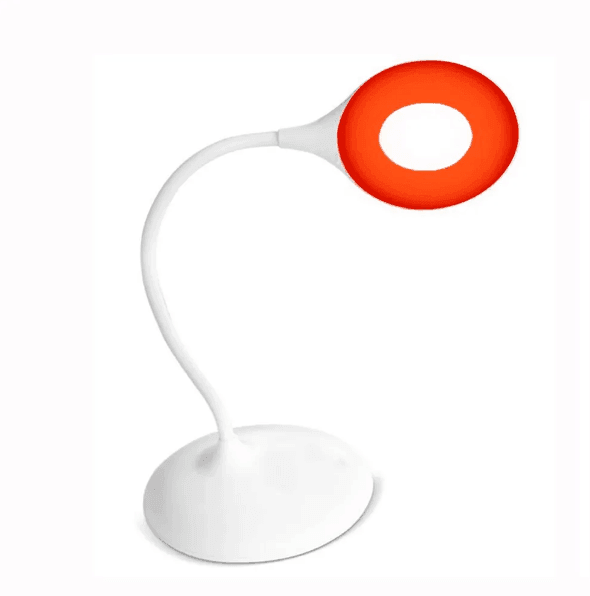DISCLAIMER: Mito Red Light devices are Class II wellness devices aimed at affecting the body through topical heating and supporting cellular function. The information provided in this article and on this site is for educational purposes only and is not intended to imply effectiveness of Mito Red Light devices for any specific application. The information provided in this article and on this site is not intended to diagnose, treat, cure, or prevent any disease, is not a substitute for consultation with a licensed medical provider and should not be construed as medical advice. Click here to read our article on potential contraindications of red light therapy..
Executive Summary
This Mito Red Light article explores the science and benefits of light therapy masks, a popular trend in skincare. Red light therapy, utilizing specific red and near-infrared wavelengths, stimulates cellular mitochondria to boost energy production, aiding in rejuvenation and repair. This can address the lack of beneficial light exposure from indoor lifestyles. Benefits include potentially supporting collagen production for skin health, evening skin tone and texture, aiding wound healing, and offering general wellness support. Light therapy masks deliver these wavelengths directly to the face via LEDs, with different colors targeting specific concerns (red for collagen, blue for acne, near-infrared for deeper soothing). While generally adaptable, those with hyperpigmentation should consult a dermatologist. At-home masks offer convenience and cost-effectiveness for consistent, gentle care, while in-office sessions provide more intense treatments. Maximizing mask results involves consistency, pairing with complementary products, staying hydrated, and monitoring skin response. Mito Red Light offers devices like the MitoCLEAR mask and panels for integrating light therapy into skincare routines.
Key Takeaways:
- Light therapy masks use specific light wavelengths to benefit skin health.
- Red and near-infrared light stimulate cellular rejuvenation.
- Masks offer convenient at-home skincare.
- Different light colors target specific skin concerns.
- Consistent use and proper pairing enhance results.
Medically Reviewed by | Heidi Wright, BSN, RN, PCCN
Have you ever scrolled through your social media feed and spotted those intriguing snapshots of people wearing futuristic masks bathed in colorful light? These aren't props from a sci-fi movie — they're light therapy masks, the latest trend sweeping through the skincare world.
With claims of transforming skin health and turning back the clock on aging, it's no wonder everyone's talking about them. So, do these masks actually live up to the hype, or are they just another beauty fad?
Here at Mito Red Light, we believe in cutting through the noise to bring you the science-backed facts you need. That’s why we’re diving into what these masks are all about and how they might just be the missing piece in your skincare routine.
What Is Red Light Therapy?
Red light therapy might sound like a concept straight out of futuristic fantasy, but it's actually a well-grounded science that's all about tapping into the natural power of light. At its core, red light therapy involves exposing the body to specific wavelengths of red and near-infrared light. This isn't just any light; these wavelengths are particularly adept at penetrating skin and tissues, reaching deep into cells with a gentle yet effective touch.
Why focus on these wavelengths? It's all about the mitochondria, often referred to as the powerhouse of the cell. These tiny structures are crucial for energy production.
When they absorb the red and near-infrared light, a fascinating thing happens: they ramp up their energy output, which is vital for rejuvenating and repairing cells. This process sets off a chain of events that can improve cellular health and resilience over time.
What Are the Benefits of Red Light Therapy?
The perks of red light therapy extend far beyond a basic boost in cell energy. In today’s modern world, most of us find ourselves spending plenty of time indoors — which means we’re largely missing out on certain wavelengths of light that are key for our overall health and wellness.
Red light therapy can help make up for the lack of light exposure many of us are experiencing, and this is the main reason behind many of the potential benefits.
Here’s what this dynamic therapy can do:
May Support Skin Health
By potentially supporting healthy collagen production, red light therapy might be able to help strengthen the skin, reducing the appearance of fine lines and wrinkles. It’s a natural process that supports the skin's elasticity and overall structure, making it look and feel youthful.
May Support Even-Looking Skin Tone and Texture
Regular sessions might be able to help even out skin tone and texture, diminishing visible signs of aging and sun exposure. This can result in a smoother, more vibrant complexion that radiates health — but you should still wear sunscreen to be safe.
May Help Support Wound Healing
The soothing nature of red light may help calm the skin, which can be beneficial in supporting the healing process of wounds.
General Wellness Benefits
It's not all about looks. Red light therapy may also help support overall well-being. By potentially supporting circulation and calming the tissues, RLT may be able to support health across various body systems.
Red light therapy offers a way to harness the benefits of light in a manner that supports, maintains, and improves various functions and structures of the body. Whether it's for skincare or general wellness, the gentle yet powerful touch of red light can be a valuable addition to your health routine.
What Are Light Therapy Masks?
Light therapy masks are at the forefront of at-home skincare technology, marrying convenience with the power of photobiomodulation. These wearable devices are embedded with an array of red LEDs (light-emitting diodes) that emit light at different wavelengths, not just red but also blue and near-infrared light. Each type of light offers unique benefits, targeting specific skin concerns through non-invasive exposure.
Designed for ease of use, light masks fit comfortably over the face. Users can enjoy a session of light therapy from the comfort of their homes, making these devices a popular choice for those looking to enhance their skincare routine without frequent visits to a dermatologist’s office.
FDA-cleared and scientifically backed, light therapy masks represent a blend of safety and efficacy, providing users with a tool that feels both professional and personal.
How Do Light Therapy Masks Work?
The effectiveness of light therapy masks lies in their ability to deliver therapeutic wavelengths of light directly to the skin. Here’s how these innovative devices operate:
Targeted Wavelengths
Each light color in the mask serves a specific purpose. Red light is known for its ability to stimulate collagen production and improve skin tone, essential for anti-aging efforts.
Near-infrared light goes deeper, soothing deeper layers of the skin, aiding in hydration and reducing signs of aging. Blue light therapy is used for its antibacterial properties, particularly effective against acne-causing bacteria, making it ideal for managing breakouts and blemishes.
Skin Absorption
The skin naturally absorbs these beneficial wavelengths, where they penetrate different layers of skin cells. Red and near-infrared lights reach into the deeper dermal layers, stimulating cellular repair and blood circulation. This process is crucial for rejuvenation and healing, essentially giving skin cells a 'boost' to perform their functions more efficiently.
Enhanced Cellular Function
By stimulating the mitochondria within the skin cells, red light encourages increased energy production. This bioenergetic boost helps cells repair and rejuvenate themselves more effectively. The interaction between light and cellular function is a prime example of how modern technology can tap into natural biological processes to enhance skin health and function.
Are Light Therapy Masks Effective for All Skin Types?
Light therapy masks are a versatile tool in the skincare toolkit, but how do they fare across different skin types? Generally, these devices are designed to be inclusive, offering benefits to a wide range of skin concerns.
However, customization and understanding one’s own skin type are key to maximizing the effectiveness of LED masks.
Adaptability to Skin Types
Whether you have oily, dry, or combination skin, light therapy masks can be beneficial. For instance, blue light is excellent for oily skin prone to acne, as it helps to mitigate acne-causing bacteria. Red light is superb for dry or aging skin, promoting collagen production and enhancing skin hydration. The gentle nature of LED light therapy means it is less likely to cause irritation, making it suitable even for those with sensitive skin or conditions like rosacea. “Remember, consulting a dermatologist or healthcare professional can be especially helpful if you have any specific concerns or questions about RLT's suitability for your unique skin type,” highlights Heidi Wright, Registered Nurse.
Considerations for Hyperpigmentation
People with darker skin tones or those prone to hyperpigmentation need to be particularly discerning.
While red light therapy can help in reducing pigmentation issues, it's important to use these devices in conjunction with the advice of a board-certified dermatologist to ensure that the light exposure does not exacerbate any existing skin conditions.
How Do At-Home Masks and In-Office Sessions Compare?
While light therapy masks offer convenience and regular access to light therapy at home, how do they compare to in-office treatments?
Let’s break it down:
Intensity and Coverage
In-office sessions generally use more powerful LED devices that can provide a broader range of wavelengths and more precise control over exposure. This can lead to quicker, more pronounced results, especially for deep-seated skin issues or severe skin conditions.
However, the professional equipment used in these settings may also come with a higher risk of side effects if not monitored carefully.
Cost and Convenience
One of the major benefits of at-home devices is cost-effectiveness. In-office sessions can be expensive, especially when multiple sessions are required.
At-home masks, on the other hand, represent a one-time investment that allows for regular use, integrating seamlessly into one’s daily skincare routine. The convenience of not having to schedule appointments or travel to a clinic makes at-home therapy an appealing option for many.
“Convenience breeds consistency. With at-home therapy, you're more likely to stick to your treatment plan because it's readily available. No more excuses about missed appointments or inconvenient timings. This consistent adherence to your regimen is crucial for maximizing the effectiveness of many therapies, like red light therapy, where cumulative effects play a significant role,” Wright adds.
Long-Term Use and Effectiveness
At-home masks are ideal for ongoing maintenance and can be highly effective over time with consistent use. They are particularly good at supporting skin health, managing signs of aging, and soothing the skin. In contrast, in-office sessions can provide dramatic improvements in specific areas, such as intense rejuvenation or significant reductions in skin damage, but might require ongoing visits to maintain results.
While both at-home masks and in-office sessions have their place in skincare regimens, the choice between them often boils down to individual needs, preferences, and goals.
At-home LED face masks are an excellent choice for regular, gentle care and prevention, while in-office procedures might be better suited for those needing more intensive, targeted interventions.
What Are the Best Tips for Maximizing Results From RLT Masks?
Incorporating light therapy into your daily routine can transform your skincare game — but to truly harness its potential, a few strategic tips can make all the difference.
Here’s how to get the most out of your light therapy sessions:
Establish a Consistent Routine
Consistency is the bedrock of any successful skincare strategy, especially when it comes to light therapy. Regular use helps the skin adapt and respond better to the therapy, leading to more noticeable results over time.
Consider integrating a session with your MitoPRO Mobile device into your morning or evening routine. Its portability ensures you can enjoy rejuvenating light therapy whether you're at home or on the go, making consistency a breeze.
Pair With Complementary Skincare Products
To boost the effects of your light therapy mask, pairing it with the right skincare products is crucial. Before a session, apply a lightweight topical serum that targets your specific skin concerns.
After the session, use a moisturizing cream to lock in the benefits and keep your skin supple. This step ensures that your skin is primed and ready to absorb the full spectrum of light, maximizing the rejuvenating effects.
Stay Hydrated
Hydration is key to maintaining healthy skin, especially when using light therapy. Drinking ample water throughout the day helps keep your skin cells plump and receptive to the benefits of LED light, enhancing both the immediate and long-term results of your sessions.
Monitor Your Skin’s Response
While embracing the benefits of light therapy, it’s important to monitor how your skin reacts over time. If you notice any sensitivity or adverse reactions, adjusting the frequency or duration of your sessions may be necessary.
This personalized approach ensures that your skin receives just the right amount of care, tailored to its unique needs.
Upgrade Your Light Therapy Experience
For those looking to take their light therapy to the next level, consider upgrading to a device like the MitoPRO+ Series.
These advanced panels offer a wider range of wavelengths, designed to target various skin issues from the comfort of your home. Their powerful yet gentle LEDs provide a more comprehensive therapy, enhancing everything from collagen production to overall skin tone.
The Bottom Line
After exploring the ins and outs of LED light therapy masks and their benefits, it's clear that these light therapy devices are more than just a passing trend. They offer a scientifically-supported approach to skin care that leverages the benefits of light to promote healthier, more vibrant skin. From enhancing collagen production and improving skin tone to soothing deeper layers of the skin and aiding in hydration, the benefits are tangible.
At Mito Red Light, we are committed to empowering you with cutting-edge solutions that fit seamlessly into your lifestyle. Why wait to experience these benefits? Check out our cutting edge MitoCLEAR red light therapy mask or explore our range of red light therapy devices today and find out how easy it is to rejuvenate, recharge, and relax on your terms.
Step into the light with Mito Red Light and transform your skincare routine forever.
Click to learn more about potential red light therapy benefits.
Find Commercial Mito Red Light Therapy Near Me
Related Articles:
How To Prep Your Skin Before Red Light Therapy
Everything You Need to Know About Red Light Therapy and SKIN
Red Light Therapy Masks vs. Panels
Retinol and Red Light Therapy: Are They Safe Together?
Sources:
Red Light Therapy: Benefits, Side Effects & Uses | Cleveland Clinic
Mitochondria—hubs for regulating cellular biochemistry: emerging concepts and networks | PMC
Effects of low-power light therapy on wound healing: LASER x LED New York | PMC
The Hype Around Photobiomodulation | Office for Science and Society | McGill University
LED Light Therapy: How It Works, Colors, Benefits & Risks | Cleveland Clinic

























